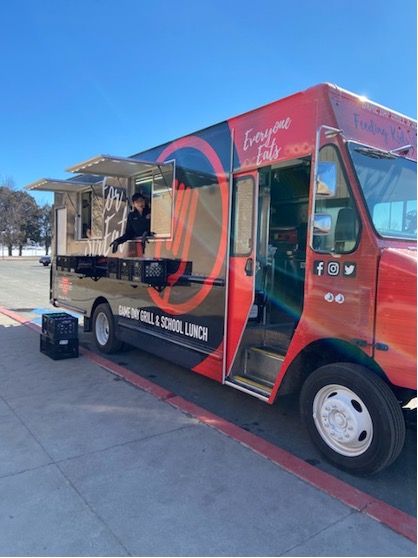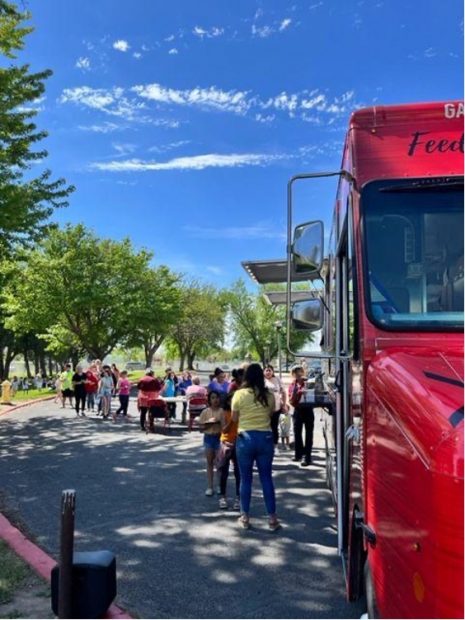In a rural district like Gooding in Southern Idaho, a student living outside of town used to go through quite the process to get summer lunch.
First, they would need to find a ride to drive them the 20-30 minutes into town where organizers were serving a meal at a lunch site (park, library, church, community center, etc.). The adult would need to sit with them while they ate their meal, and then drive them back to their home.
This is because the United States Department of Agriculture (USDA), who fully funds the Summer Food Service Program (SFSP), required all students to eat their free summer meals daily at the site where they were served.
This summer, in a new “grab-n-go” model for rural areas recently approved by the federal government, students or parents can pick up food and bring it to their house. They can even get up to five meals at a time, meaning only one trip to town per week.
The hopes are this new flexibility will increase the number of rural students getting access to summer meals. Nationally, out of six students who usually get meals during the school year, only one is accessing meals during the summer. In many rural areas, all children ages 1-18 qualify for free summer meals.
Across Idaho according to Map the Meal Gap, 8.6% of Idaho’s children have experienced food insecurity. Mary Ann Liby, coordinator of the Summer Food Service program through the Idaho Department of Education, emphasized the need for these summer meals, especially in rural areas.
“The most challenging part of this job is definitely seeing that the need exceeds what we’re currently able to provide.”
Gooding’s Innovative Solutions
In Gooding School District, Child Nutrition Director Anji Branch with 25 years of experience knows innovative solutions are required to reach rural students. The district’s report card cites 72% of the students as coming from low-income families.

When the COVID-19 pandemic hit and schools closed, Branch and her team decided to invest in a way to bring food to students all around their rural area. Using extra COVID funding, they bought a food truck equipped with refrigerators and other supplies, which they could drive to out-of-town food locations.
In the summer of 2022, the truck was used as a spot for students to pick up meals and eat them there. However, with the new “grab-n-go” model, they can drive the truck to locations around the district and give students a week worth of meals.

“There’s so much more to child nutrition than putting food on the plate,” Branch explained, also emphasizing, “hunger has no limitations. It’s not bound by city limits.”
Currently, Gooding School District feeds about 30% of their student population during summer months. Branch hopes to see this number grow this year. They are prepping for summer and sending out surveys to parents to see the best places to offer food and how they can help.
Branch says the new “grab-n-go” flexibility also comes with some organizational hurdles. For example, if a parent comes to pick up meals for their three children but one is in summer school, that child will receive meals at school. So they will need to track each student carefully to avoid any “double dipping,” as USDA only funds one meal per student per day.

Despite logistical difficulties, Branch says, “our program is well supported by all of our admin team and our school board and our community…we really do have the best of everything here. So that makes my job easy.”
Summer EBT
One proposed solution to the transportation solution was the Summer EBT program, part of the Department of Health and Welfare budget which recently failed in the Senate by a 10-25 vote.
The program would have provided monthly stipends of $40 to eligible children, whose parents could then use the money at any grocery store accepting SNAP– The state of Idaho would have paid $545,300 while USDA would have funded the other $16.3 million.
In a statement by Communications Director Scott Graf, he explained that the Department of Education had included a request for the funds to help run the Summer EBT program in their yearly budget. He said over email, “should anything change, we at the department remain ready to follow through on our original commitment.”
Sponsors Needed
A press release in January by the Idaho Department of Education outlined rural areas in special need of sponsors, who agree to make meals for students in the summer and then are reimbursed by the USDA.
Liby encourages those interested in sponsoring summer meals to get involved, as SFSP works best with as many sponsors as possible. She explained that for the summer, “the menu is more simplified and more streamlined than the school meals program”.
“You don’t have to have 10 plus [years] experience as a food service director…or anything like that. You can…be a church organization and purchase these items from your local farmers market or your local grocery store.”
With new flexibility, sponsors don’t have to be open while students eat meals. Liby explained, “Sponsors can operate for 10 minutes if they want to…just serve kids and after they are done serving everyone, they can pack up their stuff…and leave for the day.” They could also choose to serve meals once a week.
Liby remarked, “the most rewarding [part of my job] is seeing the community come together and work together to implement this program across our state. We have about 70 [sponsors] across the state and they operate 250 summer meal sites across Idaho. And so there’s definitely that passion, that dedication that our sponsors just understand and know how important the program is.”
Here is a list of the rural areas in special need of sponsors. If you are interested in sponsoring, information is available here.
Region 1:
- The SFSP lacks adequate coverage in the communities of St. Maries, Boundary County, Kootenai, Kellogg and Wallace.
Region 2:
- The only SFSP sponsors in Region 2 are in Lewiston, Lapwai, Moscow and Grangeville.
Region 3:
- Only the Boise and West Ada school districts, as well as the Boys and Girls Club of Ada County currently cover Ada County.
Region 6:
- SFSP does not have sponsors in Custer and Teton counties and only one in Lemhi County.
